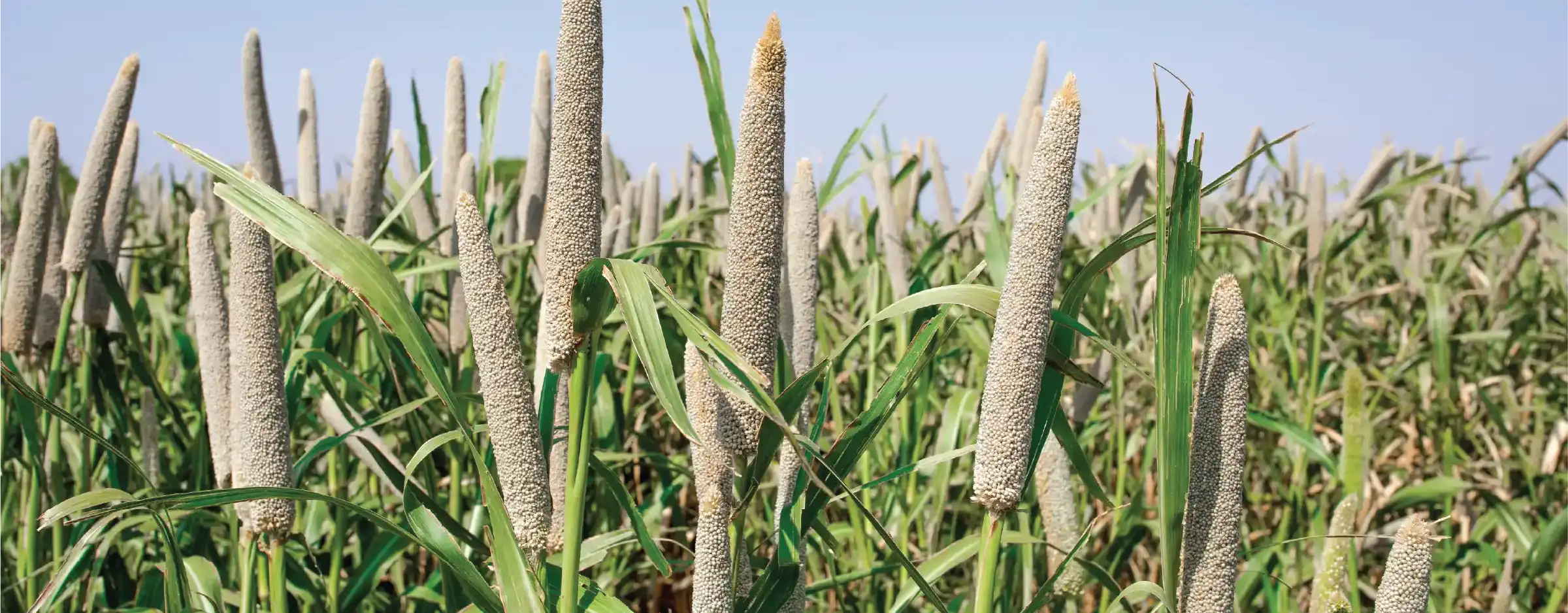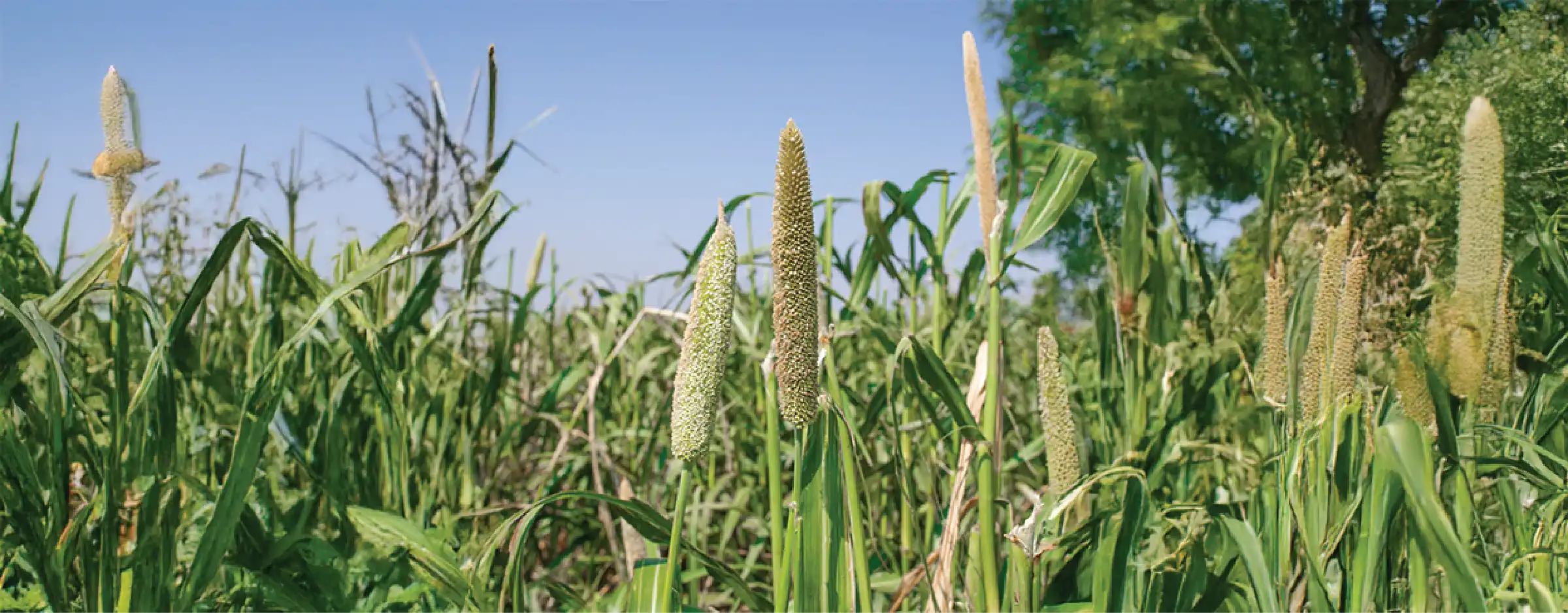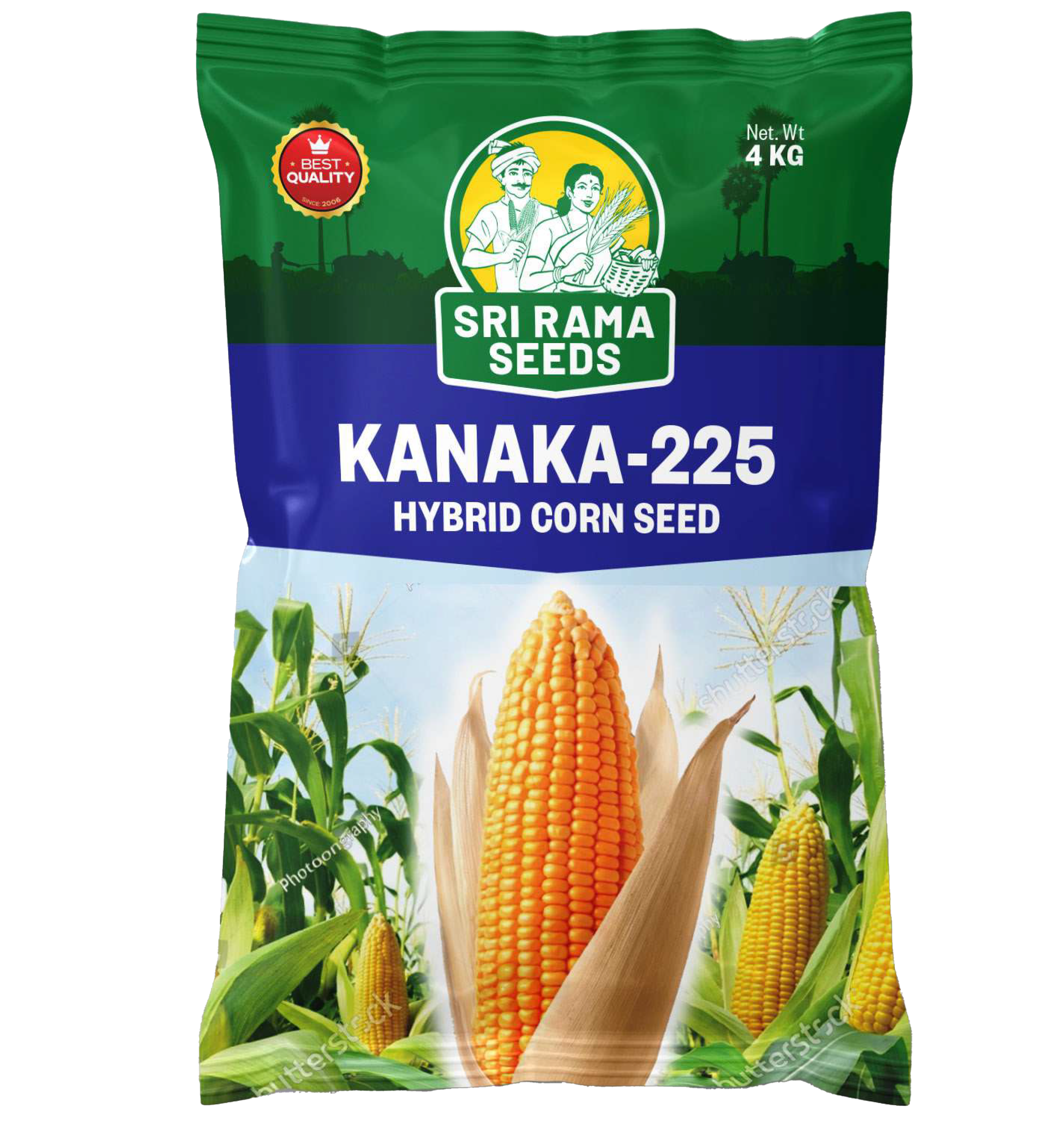High-Yielding Hybrid Bajra with Excellent Grain and Fodder
Output
SRUJANA-50 is a superior F1-hybrid bajra (pearl millet)
variety, developed for fast maturity, high grain yield, and
superior fodder production. With a maturity period of 80–85
days and a plant height of 6–7 feet, this variety is highly
adaptable to both rainfed and upland irrigated conditions.
The large cob size (33–36 cm) and high grain yield (15–17
qtl. per acre) make SRUJANA-50 an ideal choice for farmers
seeking high productivity and profitability. Additionally,
its dry manure yield of 25–30 qtl. per acre ensures ample
fodder availability for livestock farming.
Challenges & Solutions
Bajra cultivation often faces challenges such as low grain
yield, inconsistent cob size, and insufficient fodder
output. SRUJANA-50 is bred to overcome these issues while
ensuring optimal farm productivity.
Challenges
Common difficulties in bajra farming include:
Solutions
SRUJANA-50 offers key benefits like:
-
Large Cob Size with High Grain Yield
-
Short Maturity (80–85 Days)
-
High Dry Manure Yield (25–30 qtl. per acre)
-
Adaptability to Rainfed & Upland Irrigated
Conditions
Performance and Profitability
Yield Potential (Qtl./Acre):
SRUJANA-50 delivers 15–17 qtl. of grain yield and 25–30 qtl.
of fodder yield per acre, ensuring high profitability for
farmers.
Adoption Rate:
Farmers prefer SRUJANA-50 for its high grain yield, early
maturity, and excellent fodder production.
Farm Profitability:
With low seed input (2–2.5 kg per acre) and high market
demand, SRUJANA-50 provides excellent returns on investment.
Market Demand:
The bold grains and superior fodder quality make SRUJANA-50
a top choice for traders, food processors, and livestock
feed industries.









